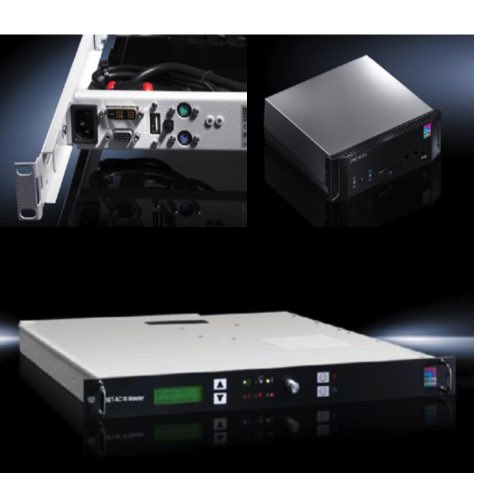Rittal Monitoring Solutions

Rittal's monitoring solutions offer comprehensive control and visibility over IT infrastructure, emphasizing flexibility and customization to meet specific needs in managing physical parameters within IT environments. Their flagship product, the CMC III Monitoring System, exemplifies this approach by integrating closely with IT security measures to oversee and manage a wide range of environmental and system parameters, ensuring operational safety and efficiency.
Rittal offers advanced fire alarm and extinguisher systems, notably the DET-AC III Master, designed for early fire detection and extinguishing within network and server enclosures. These systems can monitor and protect up to five bayed racks, using the environmentally friendly extinguishing agent NOVEC™ 1230, which is safe for IT components. The system is compact, taking up only 1U of rack space, and includes features like automatic smoke detection and extinguishing, continuous smoke detector monitoring, and integration with Rittal's CMC III monitoring system for enhanced security and control within closed server environments
PLCs vs Data Loggers
PLCs
Programming Logic Controllers (PLCs) are industrial digital computers that are designed for the control of electrical processes. These processes include any activity that requires high reliability, ease of programming and process fault diagnosis. PLCs are used to collect various types of data through the I/O portion of the PLC. The I/O or inputs and outputs, is where sensors and instruments can be wired into the PLC. This information on its own does not enable the function of the PLC. The PLC needs to be programmed. The programming language that is used will depend on the type of PLC that is selected. There are many different languages that can be used and some PLCs even allow for multiple languages to used on the same piece of hardware. With the program loaded onto the PLC it will then have the ability to read the various inputs and outputs, assist in storing the data it collects, send that data to an HMI or send output commands. The output commands can control things like valve actuation and on/off commands to relays and contactors. PLCs can perform complex tasks if the right kind of hardware is used, paired with the right programming.
Data Loggers
Data loggers, or data recorders, are electronic devices that record data over time. This data can be collected with a built in set of sensors or instruments, or with external sensors that can be connected to the data logger just like a PLC. One of the biggest differences between PLCs and data loggers is that data loggers don't typically require as much programming and are only intended to be used to collect data. One of the primary benefits of using data loggers is that they can automatically collect data over a 24 hour period. Once they have been properly configured, data loggers are deployed and left unattended to measure and record information for a specified time period. This allows for a comprehensive and accurate picture of the various conditions that can be monitored, such as air temperature or relative humidity. Data loggers almost always have some kind of internal memory for data storage. This is different from PLCs, which are not designed to store large amounts of data, but instead send that data to an over network connection or HMI.

